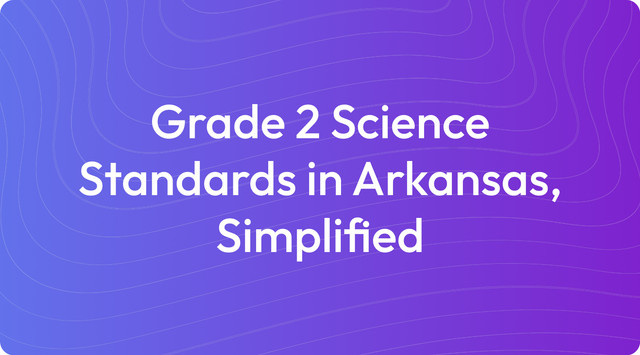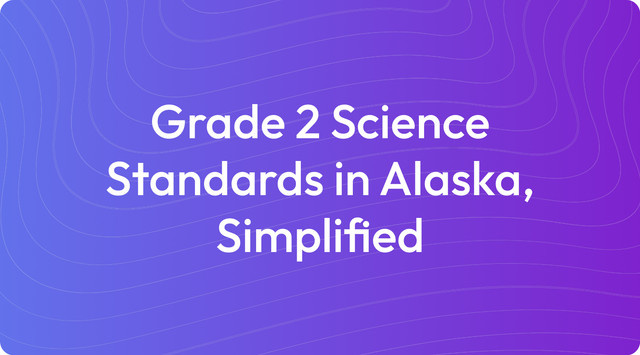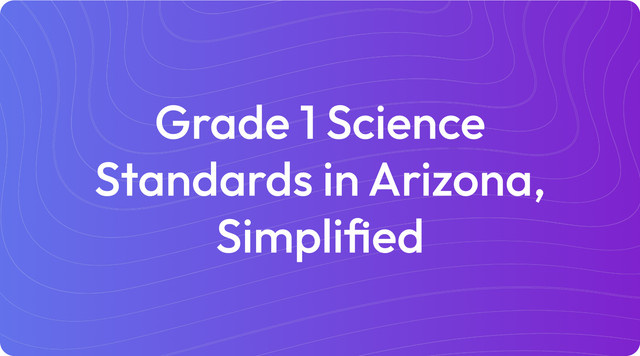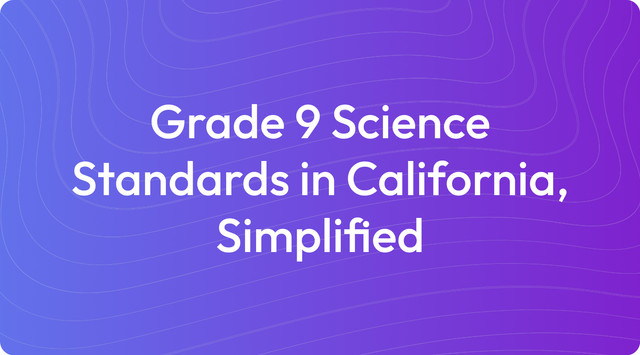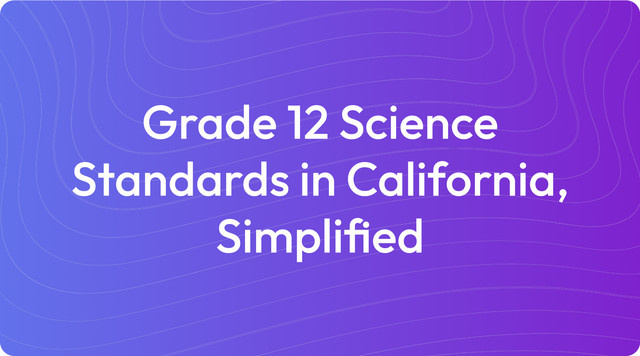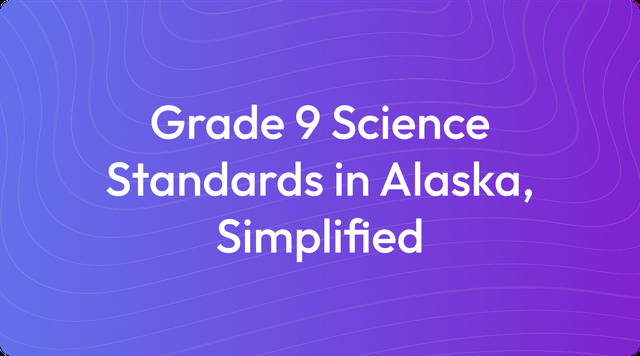Grade 2 Science Standards in California, Simplified
Grade 2 science in California: discover materials, life cycles, and landforms. Get the basics—read more on TeachShare!

Understanding education standards is a fundamental part of curriculum planning, and our goal is to make these frameworks more accessible for you. This guide will walk through what standards are and how they apply in the classroom. We will use California's second-grade science standards as a clear example to illustrate these concepts.
Education standards are a set of learning goals that outline what students are expected to learn by the end of a grade level. For teachers, they provide clear benchmarks for instruction without dictating specific teaching methods or materials. For instance, a California Grade 2 Science Standard requires students to be able to plan and conduct an investigation on whether plants need sunlight and water, which sets the learning objective for that unit.
What Are Grade 2 Science Standards in California?
The Grade 2 Science Standards in California, part of the California Next Generation Science Standards (CA NGSS), focus on building curiosity and foundational science skills through hands-on, inquiry-based learning. These standards emphasize three-dimensional learning, combining Science and Engineering Practices (SEPs), Crosscutting Concepts (CCCs), and Disciplinary Core Ideas (DCIs) to help students explore and understand the natural world.
To help you plan, here are the key areas covered in California's Grade 2 Science Standards:
- Physical Science (PS):
- PS1: Matter and Its Interactions
- Key Standard (2-PS1-1): Plan and conduct an investigation to describe and classify different kinds of materials by their observable properties (e.g., texture, flexibility, color).
- Key Standard (2-PS1-2): Test and analyze how materials can be changed by heating or cooling (e.g., ice melting, chocolate hardening).
- Key Standard (2-PS1-4): Construct an argument with evidence that some changes caused by heating or cooling can be reversed and some cannot.
- PS1: Matter and Its Interactions
- Life Science (LS):
- LS2: Ecosystems: Interactions, Energy, and Dynamics
- Key Standard (2-LS2-1): Plan and conduct an investigation to determine if plants need sunlight and water to grow.
- Key Standard (2-LS2-2): Develop a simple model that shows how animals (like birds or squirrels) disperse seeds and pollinate plants.
- LS4: Biological Evolution: Unity and Diversity
- Key Standard (2-LS4-1): Make observations of plants and animals to compare the diversity of life in different habitats (e.g., forest, desert, ocean).
- LS2: Ecosystems: Interactions, Energy, and Dynamics
- Earth and Space Science (ESS):
- ESS1: Earth’s Place in the Universe
- Key Standard (2-ESS1-1): Use information from several sources to provide evidence that Earth events, like earthquakes or erosion, happen quickly or slowly over time.
- ESS2: Earth’s Systems
- Key Standard (2-ESS2-1): Compare multiple solutions designed to slow or prevent wind or water from changing the shape of the land.
- Key Standard (2-ESS2-2): Develop a model to represent the shapes and kinds of landforms and bodies of water in an area.
- Key Standard (2-ESS2-3): Obtain information to identify where water is found on Earth (e.g., oceans, rivers, glaciers) and that it can be solid or liquid.
- ESS1: Earth’s Place in the Universe
- Engineering, Technology, and Applications of Science (ETS):
- ETS1: Engineering Design
- Key Standard (K-2-ETS1-3): Analyze data to determine the best solution to a problem (e.g., designing a tool to prevent soil erosion or building a dam to redirect water).
- ETS1: Engineering Design
The framework for these standards is guided by the Next Generation Science Standards and the California Department of Education.
Key Tested Standards
In California, the Grade 2 Science Standards are aligned with the NGSS framework, focusing on building foundational skills across key scientific domains. Assessments typically center on a student's ability to conduct hands-on investigations, solve problems, and explain cause-and-effect relationships. Here are the key standards likely to be assessed:
- Physical Science (PS): Matter and Its Interactions
- 2-PS1-1: Classify Materials by Properties: Plan and conduct investigations to describe and classify different kinds of materials by their observable properties, such as color, texture, and flexibility.
- 2-PS1-2: Effect of Heating and Cooling: Test and analyze how heating or cooling materials causes changes and determine which of those changes are reversible or irreversible.
- 2-PS1-4: Reversible vs. Irreversible Changes: Construct an argument with evidence that some changes caused by heating or cooling can be reversed and some cannot.
- Life Science (LS): Ecosystems and Diversity
- 2-LS2-1: Plant Needs: Plan and conduct investigations to determine if plants need sunlight and water to grow.
- 2-LS2-2: Animals Help Plants: Develop a simple model to show how animals help disperse seeds or pollinate plants.
- 2-LS4-1: Diversity in Habitats: Make observations of plants and animals to compare the diversity of life in different habitats.
- Earth and Space Science (ESS): Earth Changes and Landforms
- 2-ESS1-1: Fast and Slow Earth Changes: Use information from several sources to explain that Earth events can happen quickly, like earthquakes, or slowly, like erosion.
- 2-ESS2-1: Preventing Erosion: Compare multiple solutions designed to slow or prevent wind or water from changing the shape of the land.
- 2-ESS2-2: Landforms and Water: Develop a model to represent the shapes and kinds of landforms and bodies of water in an area.
- 2-ESS2-3: Water on Earth: Obtain information to identify where water is found on Earth and that it can exist as a solid or a liquid.
- Engineering and Design (ETS): Problem Solving
- K-2-ETS1-3: Analyze Solutions: Analyze data from tests to compare which solutions best solve a given problem.
This information is based on guidance from the Next Generation Science Standards and the California Department of Education.
Example Learning Objectives for Unit Planning
Learning objectives translate broad standards into specific, measurable goals for a lesson or unit. They help clarify what students should be able to do after instruction, which simplifies planning activities and assessments. Here are examples for two Grade 2 Science standards, written in student-friendly language and aligned with the NGSS three-dimensional learning approach:
Standard 2-PS1-2: Analyze Reversible and Irreversible Changes
For this standard, where students analyze how heating or cooling materials causes changes, the objectives are:
- I can explain how heating or cooling affects materials like water, chocolate, or butter.
- I can test what happens when I heat or cool materials and record my observations.
- I can identify which changes can be reversed, like ice melting and refreezing, and which cannot, like baking batter into a cake.
- I can use evidence from my observations to explain why some changes are reversible and others are not.
Standard 2-LS2-1: Investigate Plant Needs
For this standard, where students plan and conduct investigations to determine if plants need sunlight and water to grow, the objectives are:
- I can describe what plants need to grow, including sunlight, water, and soil.
- I can set up an experiment to grow plants in different conditions, such as with and without sunlight or water.
- I can record observations about how plants grow in different environments.
- I can use evidence from my investigation to explain how sunlight and water affect plant growth.
Key Changes & Updates
The Grade 2 Science Standards in California were significantly updated with the adoption of the California Next Generation Science Standards (CA NGSS) in 2013. This was a deliberate move away from rote memorization and toward a more dynamic, hands-on approach. The goal is to foster genuine curiosity and critical thinking by having students actively engage in science, preparing them for more advanced learning down the road.
The core of this update is a shift to three-dimensional learning, which integrates scientific practices, overarching concepts, and core content knowledge. For you in the classroom, this means a greater focus on real-world phenomena and the introduction of engineering design principles to encourage problem-solving. Instead of just learning facts, students are now expected to conduct investigations, analyze data, and construct arguments based on evidence—skills that are valuable across all disciplines.
Create with TeachShare
We understand that keeping up with standards while creating engaging, aligned materials takes time you don't always have. Our platform is designed to help you build high-quality, research-backed resources quickly, so you can focus more on teaching and less on prep work. Start creating standards-aligned instructional resources with TeachShare now.
Frequently Asked Questions
What are the main topics covered in Grade 2 Science?
The second-grade science curriculum in California is built around four key areas of study:
- Physical Science: Exploring the properties of materials, like texture and flexibility, and observing how heating and cooling can cause reversible or irreversible changes.
- Life Science: Investigating what plants need to grow, how animals help with pollination and seed dispersal, and comparing the diversity of life in different habitats.
- Earth and Space Science: Learning about slow and fast changes to the Earth’s surface, such as erosion and earthquakes, and identifying different landforms and bodies of water.
- Engineering: Applying scientific knowledge to design solutions for problems, like creating a tool to stop erosion or finding a better way to help plants grow.
What’s new in the updated NGSS standards?
The updated standards introduce a few key shifts in how science is taught, with an emphasis on active learning. Here are the main differences:
- Three-Dimensional Learning: This approach combines Science and Engineering Practices, Crosscutting Concepts, and Disciplinary Core Ideas in each lesson.
- Hands-On Investigations: There is a greater focus on learning by doing, where students conduct experiments and make their own observations.
- Real-World Applications: Lessons are designed to connect to students' everyday lives, making concepts like how sunlight affects plants more relatable.
- Problem-Solving: Students are encouraged to think like engineers by designing and testing solutions to challenges presented in class.
How do the standards make science more engaging for students?
These standards are designed to spark curiosity and make science more exciting for young learners. Here’s how:
- Exploring Real-World Phenomena: Students investigate things they can see and experience, like how heating changes chocolate or how water shapes the land.
- Conducting Hands-On Activities: Instead of just reading from a book, students get to grow plants in different conditions or create their own models of landforms.
- Encouraging Curiosity and Collaboration: Lessons often involve collaborative projects where students work together to solve a problem, such as designing a solution to prevent erosion.
What are some examples of activities aligned to Grade 2 standards?
Here are a few examples of classroom activities that align with the second-grade standards:
- Classifying Materials: Students sort various materials like metal, wood, and plastic based on observable properties such as texture, flexibility, and color.
- Heating and Cooling: Students can heat and cool common materials like butter or chocolate to observe and document reversible and irreversible changes.
- Plant Growth: Students grow plants under different conditions (e.g., with and without sunlight) and record their observations to understand what plants need to survive.
- Preventing Erosion: In a hands-on test, students can see which materials, like rocks or plants, are best at preventing soil from washing away.
- Landform Models: Students use clay or sand to create models that represent different landforms and bodies of water.
How do these standards prepare students for future science learning?
The second-grade standards do more than just teach science facts; they build a strong foundation for future learning in several important ways:
- Critical Thinking: Students learn to analyze data from their investigations and draw conclusions based on evidence.
- STEM Preparation: The focus on engineering and design helps build skills that are valuable for future studies in science, technology, engineering, and math.
- Foundation of Concepts: Topics like materials, ecosystems, and Earth systems provide the groundwork for more complex scientific ideas in the upper grades.
Answer


